70 years Carpathian Kovpak raid
The Ukrainian headquarters of the partisan movement (USHD) at one time characterized this raid as “the most brilliant” of all that had been committed by the Ukrainian partisans during the war years. The American historian Walter Ze'ev Laqueur will call the Carpathian raid the “most impressive” operation of the partisans 1942 — 1943. The march of Kovpak’s compound to the deep rear of the enemy is still being studied by specialists in guerrilla warfare, and military historians from all over the world are showing great interest in it.
Unfortunately, Ukraine at the state level will not celebrate this glorious anniversary with dignity. I think a lot has been spent on the recent campaign "To Europe without fascists!". These funds would be more than enough for a truly anti-fascist action - to celebrate the 70 anniversary of the legendary partisan raid on the enemy’s deep rear.
21 on May at the initiative of the communists to vote in BP was a draft resolution "On the occasion of the 70 campaign of the Karpatsky raid of Sidor Kovpak's partisan raid".
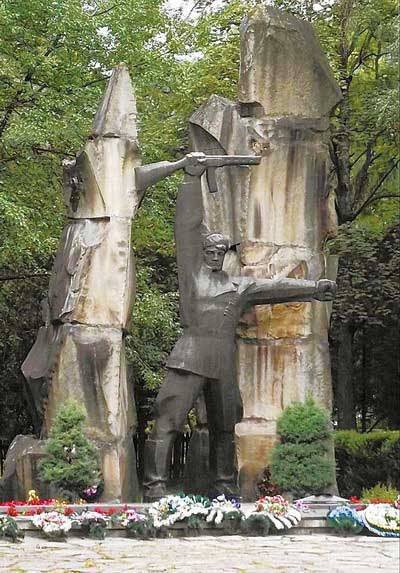 The authors (V. Babich, P. Tsybenko, O. Levchenko - all KPU) suggested recommending to the Cabinet of Ministers to create an organizing committee for the preparation and holding of events dedicated to the anniversary of the Carpathian raid, “including representatives of the central and territorial organizations of the government and the government. samovryaduvannya, the greatness of the veterans of the war and the partisan partisan ruhu. "
The authors (V. Babich, P. Tsybenko, O. Levchenko - all KPU) suggested recommending to the Cabinet of Ministers to create an organizing committee for the preparation and holding of events dedicated to the anniversary of the Carpathian raid, “including representatives of the central and territorial organizations of the government and the government. samovryaduvannya, the greatness of the veterans of the war and the partisan partisan ruhu. "Local state administrations were instructed to develop action plans that would include “conducting of call-in stations for the future; held at the 2013 vyresnі-zhovtnі rock at the beginning of the mortgage lectures of thematic lessons, lectures, parties, literary-mystical contests, svyatkovykh kontiriv, associated with 70-richchuyu Karpatskogo raid; Organizing in state museums, bibliotekah, innachalno-vikhovnyh mortgages expositions and services, associated with 70-rychchyu Karpatskogo raid guerrilla ’’ union Sidor Kovpak.
The State Committee for Television and Radio -patriotic of the partisan part of Sidor Kovpak, and also with the eyes of the visors of the masses of the informational, political, political, political, military and cultural the bathtub of the ichshih dіyachіv v_dnosno tsієї podії ".
Finally, the state enterprise “Ukrposhta” was asked to publish a series of postage stamps dedicated to the glorious jubilee.
However, a sufficient number of deputy votes in support of the resolution was not found - “for” only 211. At the same time, there were no deputies in the Party of Regions 12 faction, and for some reason 23 did not vote. It is easy to calculate that half of these 35 votes of the “regionals” would be enough for the said decree to become legal.
At the insistence of the Communist Party faction, an attempt was made to revisit this issue. Alas, here the voting results were even more depressing: 187 is in favor. In the Party of Regions, 11 was absent and 43 was not voted.
But this vote took place only 3 days after large-scale "anti-fascist" actions organized by the Party of Regions. It would seem that there would be anti-fascists and cards in their hands - to put such a case historical a blow to the brown plague through events at the state level in connection with the 70th anniversary of the partisan feat. But ... Such an indifferent attitude to the memory of anti-fascist heroes has once again witnessed what the "anti-fascist" rhetoric for the ruling party is - public relations and political technologies.
It may surprise some readers that 2000 is recalling that vote in BP only now. There is an explanation. The fact is that there was another option that could save the situation: the president has the right to appoint state celebrations by his decree (in fact, the BP decree devoted to the KNVAX 70 anniversary of Karpak raid, which was proposed by the Communists, could become the basis for a presidential decree).
Unfortunately, nothing like this happened. Either the initiative did not reach the head of state, or Viktor Fyodorovich is busy with much more important matters - for example, developing plans for a campaign to Europe “without fascists”.
It is very indicative of the ferocity with which the Svoboda faction voted against this decree. As a rule, deputies who do not support this or that bill simply do not vote. But in this case, all 36 "svobodovets" voted "against". What, I believe, once again demonstrated whose spiritual heirs they are. However, this is also an argument in favor of the fact that all real - and not declarative - anti-fascists would provide with their votes the holding of events in honor of the partisans of the Kovpak compound. Moreover, as we remember, in the course of their “anti-fascist” actions, representatives of the party in power often recalled “Freedom” - as the main carrier of neo-Nazi ideology.
2000 km for 100 days in the enemy’s rear
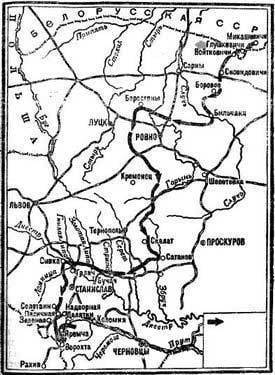 Map of the Carpathian raid
Map of the Carpathian raidIn the legendary raid Sumy partisan formation 12 was made on June 1943 from the territory of the Zhytomyr region (from the village of Miloshevichi, which is on the Ukrainian-Belarusian border), about a month before the start of the Kursk battle. In total over one and a half thousand fighters. In his diary [1], Sidor Artemyevich Kovpak will indicate even the national composition of those who went to the Carpathian raid: Russians - 684, Ukrainians - 598, Belarusians - 405, other nationalities - 197, the names of the USSR - 19. The task of the Kovpak party was to strike at the enemy’s rear communications, to organize sabotage in the oil fields of Galicia.
__________________________
1 Guerrilla War in Ukraine. Diaries of the commanders of partisan detachments and connections. 1941 — 1944. - M .: Tsentrpoligraf, 2010.
June 15 partisans crossed the railway Sarny - Luninets.
20 June Kovpak connection will come into contact with the detachment of another famous partisan commander Dmitry Medvedev. The meeting will be accompanied by an incident: Kovpak members and Medvedevites took each other for the Nazis and opened fire. In the future, the "Winners" - a detachment commanded by the Hero of the Soviet Union Medvedev will provide all possible assistance to Kovpak's connection, primarily intelligence information. In his diary, Kovpak even mentions the legendary Soviet intelligence officer Nikolai Kuznetsov (although he does not give his last name, obviously, she was unknown to him): “The representative of Medvedev, who works t (ain) and (Gent) in Rovno as a guard officer, has 2 cross and several wounds, received permission to meet with Koch. Koch asked how the situation was at the front, the mood of the soldiers, for which he received crosses, etc. The generals who were present during this conversation listened to the lies of our man, and then shook hands with him. He spoke pure German, and any German officer could envy the brilliance of his appearance. ”
21 June Kovpak forces forced the river Sluch. On the night of 24 on June 25, the junction crossed the Kostopil-Alexandria highway and the Sarny-Rovno railway at the Gura-Kamenk crossing. All transitions are accompanied by sabotage on enemy communications.
It should be noted that every crossing of a railway or highway, crossing a river is a highly dangerous and difficult event for a partisan column up to 10 km long! But thanks to the vast experience of the partisan struggle, including the leadership of large partisan formations, Kovpak manages to drive his ten-kilometer columns under the enemy’s nose.
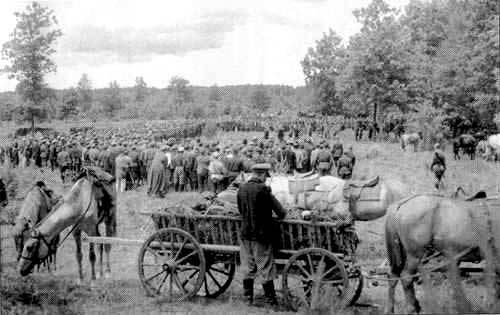
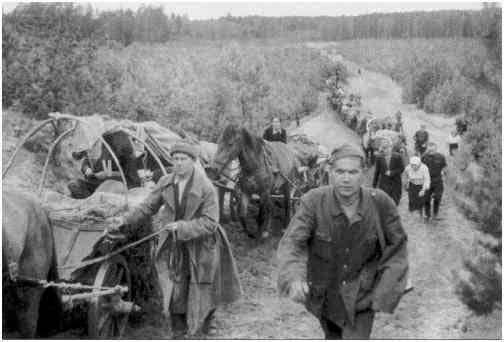
In the campaign do not be afraid to make a detour.
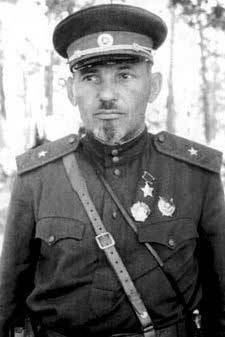 Sydor Kovpak
Sydor KovpakIn the book of memoirs “From Putivl to the Carpathians” [2], Sidor Artemyevich explains the secret of his success: “Coming out of the forests and wetlands of southern Polesie into the fields of Western Ukraine, we had to go through three regions - Rovno, Tarnopolskaya and Stanislavskaya, to force several large rivers, cross up to a dozen railways. Can a partisan column, stretching along the road for 8 — 10 kilometers, make this march secretly without finding itself?
__________________________
2 Kovpak S. A. From Putivl to the Carpathians. - M .: Voenizdat NPO USSR, 1945.
During the maneuver actions, we gradually developed our own iron laws of the partisan march. To campaign in the dark, and in daylight to relax in the woods or in remote villages. Know everything that is done far in front and around. Do not walk for a long time in one direction, prefer detour to direct roads, do not be afraid to make a hook or loop. Passing by the large garrisons of the enemy, to hide behind them barriers. Small garrisons, outposts, ambush to destroy without remainder. Under no circumstances do not disturb the movement of the system, no one leave the ranks. Always be prepared so that two minutes after the appearance of the enemy, the marching column could occupy all-round defense and open fire to kill from all types. weapons. Some guns leave the position, while others hit the road straight. The main forces are deaf country roads, paths, roads that are known only to local residents, and the sabotage groups overlook the Bolshak and railway lines, close them to the enemy - tearing bridges, rails, wires, derailing echelons. Where the guerrilla column goes at night is silence, and far around everything is thundering and burning. ”
29 June junction is crossing the railway Lutsk - Zdolbunov. "In order not to allow the train with manpower and to avoid a fight when you move the train (train) to the train (orog)), I send sabotage groups to the right and to the left of the move, which in 23.00 should by all means mine both ways (train ) d (of the road) canvases, ”Kovpak writes in his diary. The proximity of the capital of the Reichskommissariat (which, as is known, was the city of Rivne) - in the case of the discovery of a partisan detachment - made it possible for the Nazis to quickly pull up their forces. Therefore, extreme caution and maximum coordination in the actions of the fighters were required. In 23.15, Kovpak writes, the 2 explosion rang west of the move, and in 23.25 there were explosions from the east (from the move). Result: “Lowered 5 echelons. When the column passed 2 — 3 km from the crossing, and the tail of the column, crossing the road, saw the trail of a convoy with cut birch, which was carried by a pair of oxen, two echelons were burning on the road, shells and bombs were cracking.
30 June another difficult transition: the railway Exactly - Lviv - Peremyshl. The connection was to march in 57 km. “People had a bad rest. But the mood is good. The road is slippery, muddy, endless ups and downs on hills, valleys, but no one complains. Today they are especially going well, ”Kovpak notes.
July 6 guerilla unit enters the borders of Galicia. In the border villages, small German garrisons basically simply scatter when the Kovpak men approach. Those whom the partisans manage to take by surprise, are being defeated. “After the defeat of m (estechka), Skalat made a big march to 45 km and stopped at p (aio) not r (oroda) of Lysa Gora for a day,” writes July 9 in his diary Sidor Kovpak.
After a three-day rest at Bald Mountain, the compound continues to raid. At the village of Rakov Conte, the Germans are trying to ambush the partisans. “In 21.00 intelligence, it was found that in Rakov Kont and the villages adjacent to the forest from the western side arrived to 60 vehicles with apr (o), and several armored vehicles. Apparently, our long-term parking in the area of Lysa Gora caused trouble. Opponent reconnoitered where we are and pulled up forces to destroy ours in (Oin) hour (as), ”Kovpak fixes in his diary. After a short battle "the Germans fled." Having crossed two rivers and traveled around the German “entourage”, the formation headed for the intended parking in the Skomorosha area.
Realizing that a large partisan detachment is operating in the fascist rear, the Nazis increase pressure on the partisan formation. On July 13, a German was already thrown against the Kovpakovites aviationwhich "fired and bombed" partisans. 5 people injured. But the raid continues.
On July 15, the junction crosses two railways (Stanislav-Ternopil and Stanislav-Lviv), and on the night of July 16 forces the Dniester River. “It was necessary to cross the Dniester and approach the oil shafts of Drohobych before the Germans organize their defenses, concentrating superior forces against partisans breaking into the mountains,” Kovpak wrote in his book From Putivl to the Carpathians. A bridge north of Galich was chosen for crossing the Dniester. With a sudden and defiant night assault, the guard of the bridge was taken aback and destroyed: “On a dark night on July 15, Lenkin's cavalry secretly approached the bridge near the village of Sivka, north of Galich. With a shout of "Hurray," horsemen who had emerged from the darkness with lava fell upon the stunned guard, and it was cut down before it had time to open fire. By morning, the partisan unit was already on the other side of the Dniester ”(ibid.). At the same time, the railways were mined in such a way that “the passing trains exploded in the morning,” Kovpak writes in his diary, “and the bridge across the Dniester after the passage of the partisans was blown up and burned.
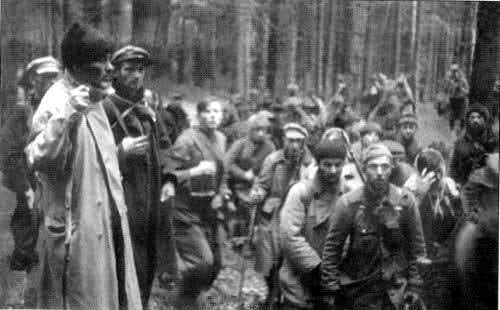
Learning the art of maneuver
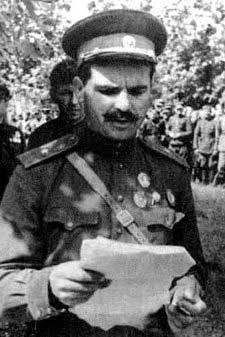 Semyon Rudnev
Semyon RudnevHaving crossed the Dniester, the partisan unit entered the mountains, in which there was no combat experience. Sidor Kovpak admits to himself (in his diary). Commissioner Rudnev [3] notes the same thing in his notes.
__________________________
3 Guerrilla War in Ukraine. Diaries of the commanders of partisan detachments and connections. 1941 — 1944. - M .: Tsentrpoligraf, 2010.
Almost immediately after entering the mountains, the compound was blocked by the Germans. Subsequently, Kovpak and his fighters will repeatedly fall into the “bags” (no less than 20 times!), But time after time the partisans, while learning the art of maneuver in the mountains, will break through the environment, not forgetting the implementation of the sabotage tasks .
July 19 junction crosses the last cross road in front of the Carpathians and storming takes the village Rossullna. “Fritz in one of their underwear jumped out of the windows and, on the move firing off, left the village,” Kovpak writes in his diary. - As a result of the 2,5-hour battle, the enemy fled, leaving the regimental headquarters with documents and a lot of cars and killed soldiers and officers. Trophies were taken: four 75-mm cannons, around 40 vehicles, 5 cars, 1 headquarters bus, mortars, machine guns and many other weapons. ”
July 20 was the most productive day during the Carpathian raid of the Kovpak junction - the Galician oil fields, actively used by the nazis to supply their military vehicles with fuel, were defeated. It is especially important that this happened at the height of the Kursk battle, in which Hitler relied on armored forces, the combat capability of which, as is well known, depends on the supply of fuel and lubricants.
“On the night of July 20, all our battalions sent under the cover of machine gunners of the group of bombers to destroy the oil fields. The flames of fires lit up the slopes of the Carpathian Mountains. The guerrillas love the night, the silence, but here and at night it was as bright as day, and the burning oil was surrounded by such a crash, the air was so trembling that there was no noise of the engines of German aircraft, which did not give us peace of mind even at night. The enemy rushed from place to place, but could not prevent us. We attacked all areas at the same time, ”Kovpak will recall in his memoirs“ From Putivl to the Carpathians. ”
Kovpak compound sabotage groups landed in the air oil-towers and oil refineries. On July 20 alone, 32 oil derricks were blown up, more than 600 tons of oil were burned, two oil pumping stations and a laboratory were destroyed.
Fighters of the Kovpak compound faced with enormous difficulties while trying to escape from the mountains in order to return to the places of their permanent base. Impassable mountainous terrain. Lack of topographic maps. The enemy, along with the seizure of the dominant heights, began to organize tight defenses and settlements, in order to cut off the partisans' ability to replenish their food. In the squad hunger. The question is what to do with the artillery - it is impossible to move with heavy weapons.
29 July 1943-th in Kovpak's diary will appear the following entry: “The enemy launched the offensive, closed all the moves and exits of the units, (cut off) us from the power base, due to our inexperience. Three Magyar regiments, 13, 14, 23 of the German regiments, one battalion of Belgians and one battalion of Caucasians prisoners participated in the attack against us. Ten planes supported the offensive. Over the 30 km, the enemy occupied the dominant heights and roads. The battle ended in our favor, and the enemy, having contact with us, escaped under the onslaught of infantry and artillery. He ordered the artillery to blow up and make an exit through the mountains without roads. When leaving on the road lost to 100 horses. "
From July 29 to August 3, the compound is maneuvering in the mountains, trying to break out of the environment. The decision is made to storm Delyatin, the capture of which opened the way to the Prut crossing. Further, the valley of this river was supposed to go to the east. The authorship of this plan, some (for example, the then chief of intelligence of the compound P. P. Vershigor) is attributed to Commissioner Rudnev.
The sudden attack on Delyatin on the night of August 4 was a success. “The defeat of Delyatin, 4 roads and 3 railways (rail) of the bridge and 40 vehicles with manpower and ammunition were destroyed. After joining the Carpathians, for the first time in Dilyatin, the soldiers, commanders and political workers ate bread, ”Kovpak will write in his diary. He decides to split the connection into 7 groups, "of which 6 is a combat group and one is passive, with wounded, which he sent deep into a large forest."
At the cost of your life ...
Not far from Delyatin, the famous partisan commissar, Hero of the Soviet Union Semyon Rudnev, took his last battle. In the perestroika years, in the wake of the "rethinking" of the past, many different kinds of myths arose around this tragic story, such as that "Rudnev was liquidated by the NKVD agents." In fact, a number of distinguished people turned out to be slandered, for example, Anna Mikhailovna Lavrukhina (“Anya Little”), the radio operator of the Kovpak’s formation, who allegedly directly performed this task of the “organs”. Often, and now you can find retelling of these ridiculous conjectures. However, neither from the point of view of common sense (why would the Chekists need to kill Rudnev?), Nor from the standpoint of facts there are no grounds for allegations of this kind.
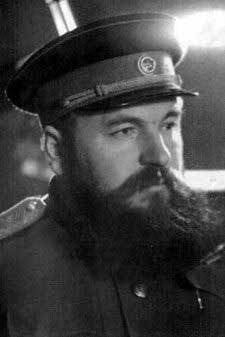 Peter Vershigora
Peter VershigoraObviously, we will never know the full picture of how the partisan commissar died, but in general the circumstances are known. For example, from the memoirs of Peter Petrovich Vershigora.
The success of the release of the connection from the environment depended on the capture and retention of the Prut crossing. The avant-garde, which included Commissioner Rudnev, managed to capture the bridge over the river. However, the Nazis, trying to prevent the partisans from escaping from the ring of encirclement, began to transfer additional forces to Delyatin. On one of such motorcade of the German mountain rifle regiment, which was advancing from Kolomyya to Delyatin, near the village of Belye Oslavy, the partisan vanguard of Rudnev ran. The Commissioner decided to give a counter battle.
“The encounter battle over Delyatin was his (Rudnev. - S. L.) fatal mistake,” Peter Vershigora wrote in the book of memoirs [4].
__________________________
4 Vershigora PP People with a clear conscience - M .: Voenizdat NKO USSR, 1946.
In 1946, on the instructions of the government of Ukraine, a special expedition will be sent to the Carpathians, which was to find out, including the fate of Commissioner Rudnev. It consisted of P. Vershigor. In the book he mentioned, he will report the results of the search: “On Mount Dil and in the Dilok tract we found the graves of those killed in the Delyatinsky battle. The 72 of our friends stayed there forever. After a detailed survey of the Hutsuls who were burying the dead, we found out that two of the graves in the ravine were buried: in one - 18, and in the other - 22 of a person. According to the photo, the Hutsuls indicated where an old, handsome man with a black mustache was buried. Rupture of this grave, the second we saw a skull with a black mustache. “It's him!” - I wanted to cry out, as soon as I saw bullet holes in the temporal bone of the skull. And how alive the commissar rose in his memory ... "
At the cost of his life, Commissioner Rudnev and dozens of other soldiers who heroically fell at the Prut river crossing ensured the salvation of the main forces of the formation. Kovpak will write about the events of those days in the book “From Putivl to the Carpathians”: “This is a“ miracle ”by the Prut River.
Perhaps some readers will have questions about the dates and figures cited in the article. I mainly used information from the traveling diary of Sidor Artemyevich Kovpak. Although in other sources you can find slightly different data ...
For a hundred days of the most active phase of the raid, the Kovpak junction passed about two thousand kilometers through the deep rear areas of the enemy - the territories of the Rivne, Ternopil, Ivano-Frankivsk regions. Kovpak troops destroyed over the 3800 the Nazis and their accomplices, defeated the German garrisons to 17, undermined the enemy’s military echelons, the 18 bridge, the 52 oil derricks, the 43 oil depots, the 13 oil refineries and the oil pipeline.
The Carpathian raid, the main period of which came at the time of the Battle of Kursk, was of great military importance. For example, the partisans of Ternopil were knocked out for a long time by the partisans, which made the transfer of the Nazi troops to the Kursk Bulge much more difficult. The Kovpak connection disorganized the communications and rear of the enemy, diverted considerable enemy forces to itself — much needed at the front. There are even figures (for example, the Hero of the Soviet Union, a member of the Carpathian raid V. A. Voitsekhovich) in 60 thousand people involved by the German command to combat the connection Kovpak. Even if this figure is somewhat exaggerated, nevertheless, the fact that the Hitlerites had to use large forces against the Kovpak partisans is beyond doubt. It is enough to mention, for example, about the removal of the 8 Cavalry SS division Florian Geyer from the front and transferring it in full to the Kovpak compound area of operations.
Along the way, we note (for the heroic OUN-UPA, allegedly "who fought with the Germans"): all the nationalist gangs taken together - Bandera, Melnikov, Bulbiv and others. - they didn’t do so much harm to Hitler’s military machine as Kovpak’s connection during only one Carpathian raid. Likewise, the Germans never abandoned as many troops against the nationalist formations as they did against the Kovpak guerrillas during the days of their 100-day heroic raid.
October 1 the main forces of the compound gathered at the Konotop farm in the Zhytomyr region. This day can be considered the completion of the Carpathian raid. Sidor Artemyevich Kovpak for this campaign was awarded the second golden star of the Hero of the Soviet Union. All the fighters who participated in the Carpathian raid were awarded high government awards.
War on two fronts
Practically all the time of the raid, the Kovpak members had to confront not only the Nazis, but also the gangs of the Ukrainian nationalists. In essence, the unit led the war on two fronts (if such an expression is applicable to the fighting of the partisans) - with the Germans and their accomplices from among the Ukrainian nationalists. Presumably, it is this circumstance that explains the above-mentioned position of the national extremists from the Freedom faction.
On the third day of the Carpathian raid, June 15, Kovpak will note in his diary: “they have entered the areas saturated with nationalists”. Further, in his notes there will regularly appear messages about clashes, if not with Bulbovites, then with Millers or Bandera. Shots in the back accompanied the partisans during their entire campaign.
18 Jun: “The nationalists killed our intelligence officer, who was moving a loner on the sidelines” ... 21 Jun: “The nationalists Bulbovtsy fired on our equestrian intelligence. Horsemen opened fire on the nationalists, 8 people were captured alive with rifles ... "22 June:" Five nationalists met with intelligence near the village of Matyuvka ... a few minutes later there was heard shooting machine guns and rifles. We returned fire - the gang ran up "... 25 Jun:" The nationalists again fired at the head and the middle of the column from the p (scientific) n (ulemetov). Caught. Bandera turned out to be "... June 28:" The nationalists fired at our Kav (Alerius) group near the village of Silna. After the attack, all the nationalists fled "... 30 Jun:" In the village of Obguv, the nationalists. They fired at the column, one of our fighters was wounded. We killed the centurion, seized the banner, the body of the bat (alon) mortar and various announcements "... 4 July:" In the area of Matveyevts they fought with the nationalists. "
“The challenge is thrown. Accept "
A similar record in the diary of Commissioner Rudnev [5].
__________________________
5 Guerrilla War in Ukraine. Diaries of the commanders of partisan detachments and connections. 1941 — 1944. - M .: Tsentrpoligraf, 2010.
18 Jun: “Our intelligence 4 ba (tallo) on, which was sent along the route for the river. Sluch, for two days led the battles with Bulbovtsy and forced to withdraw, not completing the task. With our approach to the village (Evne), Mikhalin began shooting, and the bastards shoot from windows, bushes and rye ... "June 20:" The commander of the reconnaissance group 3 (th) rifle) b (atallion) on the radio reported that he was holding a fight with nationalists 40 m (inut), there are two soldiers killed, ammunition running out. There are many nationalists. I had to return the intelligence back. Well, bastards, the challenge is thrown - we accept ”... 23 Jun:“ The road is the same as yesterday, all villages are infected with nationalists. Often they shoot from around the corner, from bushes, from rye, etc. Ours rarely answer. We only shoot when we see the shooter. There are interesting cases when my deputy Androsov talked with the girls, 7 came up bearded men, also listened to him, but then, seeing that he was alone, they grabbed rifles from rye and started shooting at him. They killed his horse and began to catch him, and if the soldiers hadn’t arrived, they would have killed him. In the evening, the reconnaissance of the 21 (th) battalion went for reconnaissance, was shot at ... "5 July:" Our battalions, while occupying the parking space, ran into Melnik nationalists. This is the third shade of the nationalists. 7 killed and nationalist 3 wounded during shootout. Our casualties are one injured from the 2 battalion. ”
In some cases, the partisans - having the main task of sabotage on the communications of the Nazis and not wanting to waste time on clashes with the nationalist gangs - entered into negotiations with them and from a position of strength were forced not to resist. And in some cases, the nationalists, who knew the power of the Kovpak members, were even forced to assist the partisans.
For example, Sydor Kovpak, in his diary, describes the passage of the 26 junction of June 1943 through the village of Zdvizhje in which there was “before the 300 nationalists”. A message was sent to the nationalists, the content of which is given by Kovpak: “Banderivtsi, Bulbіvtsі! Chi dіdko you rosbere, hto wi taki. The civil partisans were forced, cuddly and demanding, and at the right, fighting against the enemy of the Ukrainian people — nіmtsya. And you scamming with your feet, wooing us. Rogue yourself to be a mess of the people. De f Vi Wee buggers, if the nimtsi burned Berest, Sheep and friends of the village and built hundreds of peaceful Ukrainian population. You don’t have enough grasp on your border, but from із-кор--стр, firing at us, attacking our layout - at the price of you. Ostanniy time podreddzhaєmo - you will be on the road, zmetemo z lyotya land at once with your іrzhimi krіsami. Your otamani, Kerovans of the Gestapo, nationality of you. Populate curse you for fraternizing rіznyu. I just before going - just one post on your side - is swept up (you) from the ground. If you want to be brave, send parliamentarians with upovnazhennennyami. Garantuomo security. Instead of that, we will love us, show us the name that yogo servants; I can help out. Commander of the Radian partisans ”.
As a result, the nationalists removed their outposts, and the partisans continued on their way along the planned route.
And here is an entry from the diary of Commissioner Rudnev from 30 June 1943-th: “We stopped for a day in the forest area of Lyubomirka, Dubichansky district of the Rivne region. The forest is wonderful, but at the entrance to this forest we met with camps of the local population and local self-defense, t (ak) n (alleged) Bandera, some were disarmed, and the other part was suggested not to shoot, otherwise we will destroy everyone. And in 12 km there are campers 400 Bandera. We decided to talk with them, but under the condition of not entering into any political negotiations, but only one thing that they do not oppose us, our reconnaissance and sabotage groups skip, and if they are touched, we will beat everyone who gets caught with a weapon; they also asked not to touch them. I'm tired of this comedy with this bastard. Every nationalist rabble has gathered, there is no difficulty in smashing them, but this will be useful to the Germans and oppose the Western Ukrainians against them. Among them, only the top is ideologically strong, and the bulk is a blind weapon in the hands of nationalist scoundrels. At the first strike, all this will scatter, and nothing will remain of an independent Ukraine. ”
The Karpatsk raid of Kovpak and the circumstances of “communicating” with nationalist formations make it possible to form an idea what kind of “army” this is - the UPA. Now, it is not a secret that many who try to pass UPA for some serious military formation call pure clown (by the standards of, for example, Sidor Kovpak, Semyon Rudnev, Peter Vershigora) Roman Shukhevych “General” and “Head Command”. The fact is a fact: one and a half thousand Kovpak members effortlessly drove these “bortsiv for the will of Ukraine”, as they say, into the tail and into the mane.
All that these "warriors" were capable of was the shots to the back from the corner. At the same time, any harsh response led either to defeat or to the capture of one or another nationalist gang. The commander of the Kovpak intelligence, Petr Vershigora, rightly compares them with jackals: “Like the jackals in the footsteps of a large beast, this scum also walked along the bloody trails of German fascism and did its own jackals. And, like jackals, ran at the first sensitive blow to the ridge with a stick. And then again attacked from around the corner. "
And often it was enough verbal threats addressed to them, so that they scattered through forests and caches and did not prevent the partisans of Kovpak’s compound from beating the main enemy at that time - the Nazis.
During the raid, the Kovpak team received numerous testimonies of the cooperation of nationalist gangs with the German command.
For example, Rudnev 2 July 1943-th recorded: “In our hands hit a number of valuable nationalist documents that show the complete merger of German fascists with Ukrainian nationalists. There is a letter from Melnik, one of the nationalist leaders, to the German authorities (with a request) to help them with arms, to fight against Muscovy. There is a document - the appeal of the Ukrainian nationalists to the Polish population, which they kill and cut, about the rupture of diplomatic relations of the USSR with the Sikorsky government and that the Bolsheviks were responsible for the destruction of 12 t (s) of officers near Smolensk. And a number of documents. There is no doubt that the top nationalists were deceiving the ordinary mass in the fact that they were fighting against the Germans, but in fact they were fighting together with the Germans and with their support against Soviet power. ”
Peter Vershigora in the book "People with a clear conscience" will write about the structure of one of the nationalist gangs "a man in fifty - sixty, of whom half were also" dismissed "from the police, and the other half were recruited from criminals - the gang that declared the fight for" separatist Ukraine ", allegedly against the Germans, but in fact the Polish massacre began." “On the same days, many nationalists left Rovno, Lutsk, Vladimir-Volynsk, Dubno and other centers of Western Ukraine at the signal of their leadership, who until then served the Germans in the Gestapo, police and gendarmerie with faith and truth. We went into the woods, to the whole world to disclose our desire to beat the Germans. They beat the Germans in words and in declarations, in leaflets, on one of them even the visa of the German printing house in Lutsk appeared, ”Vershigora notes.
Vershigora, who was ex officio (the head of the intelligence unit) had to scrupulously understand the nature of the nationalist gangs, especially noted the tendency to collaborate with the Nazis from the people of Galicia: “The data indicated a direct connection of the nationalists with the Germans, with the Gestapo, with the gendarmerie. Especially where Galicians rooted, communication with the Germans immediately appeared, sometimes very secretive, carefully disguised, and sometimes open. ”
Of interest are the entries in Kovpak's diary for 3 — 5 in July of 1943 — in which — based on the testimony of the prisoners of Melnikov — reveals the background of the “insults” of the Ukrainian nationalists to the Germans and the reasons why the former policemen massively threw themselves into the woods.
“The answers of the captured Melnikov. How was the Melnikov gang formed? With the arrival of the Germans, all the fists entered the Ukrainian police, because it was possible to rob Jews. The junk stolen from the Jews was sold and drunk. As time goes by, the Jews are slaughtered, eating, drinking is necessary, but for what? The Germans put the police on a ration - 500 g (amm) bread, pressed, began to beat. The police did not like it. She runs into the forest, organizes herself into gangs (a swarm, a couple, a hundred, a hut, a regiment) - and attack the unarmed Poles. Plait village, kill and cut people, take bread, meat, lard and all the available products and ticking in the kuren (in the forest). Drink and sleep. They go pans, what else? ”- noted Kovpak.
Such was the motivation of the “wrestlers for Ukraine”.
Ethnic cleansing with signs of genocide
Finally, it should be said that the Carpathian raid of the Kovpak compound came just at the time when the gangs of Ukrainian nationalists carried out the genocide of the Polish population. Kovpakovtsy witnessed ethnic cleansing carried out by these "visitors of Ukraine".
As Peter Vershigora will remember, at first the partisans of the formation perceived what was happening in Polish villages for the actions of the German punishers. But when they began to clarify the details, it turned out that the Ukrainian nationalists have significantly surpassed even the SS men in their atrocities. Vershigora, who has seen quite a lot during the war years, will be shocked: “Tonight a group of fifty armed men burst into one of the smaller Polish villages, a forest farm in thirty huts. Unknown surrounded the village, put up posts, and then began to walk in a row from the hut to the hut and destroy the inhabitants. Not execution, not execution, but brutal destruction. Not shots, but with oak stakes on the head, with axes. All men, old men, women, children. Then, apparently intoxicated by blood and senseless murder, they began to torture their victims. Cut, pricked, choked. Having a decent experience of war and knowing the style of German punishers well, I still didn’t believe the scouts' story to the end. This I have not yet met. "
Vershigora personally went to the scene. And that's what he found there: “In the first hut, into which we entered, lay seven corpses. The front door was open. In the hallway, bending over with a flexible girl camp over a high threshold, she lay face up above a girl of about fifteen in one nightgown. The torso was in the upper room, and the head hung down on the floor of the passage. A ray of sunshine gilded spreading light brown hair, and blue eyes were open and looked out onto the street, at the world over which the bright sun rejoiced. From the open lips on the cheek drained, already hardened in the morning frost, a trickle of blood. Adults and children lay side by side in the hut. Some had crushed skulls, and people could not be seen, others had their necks cut. On the stove - completely black and without traces of blood, an ancient old woman with traces of rope around her neck. The rope wrapped around the rocking chair lay right there. When I hurriedly left the house that represented the family coffin, I saw a bunch of long hair on the latch of the outer door. They got entangled in the pen and trembled under the breath of the pre-spring wind toward the sun.
In other houses the same picture was repeated. ”
The soldiers of the Kovpak compound often became saviors for the Polish population in those areas where the partisans conducted their actions.
Given the evidence of eyewitnesses (in this case, the partisan of the Kovpak compound), the last statement of the Polish Senate, in which the 1943 events of the year were called “ethnic cleansing with signs of genocide,” seems quite adequate.
PS In conclusion, let us once again return to the question of the need to honor the heroic deeds of Kovpak people at the state level. There is still time. In particular, relevant activities could be timed to the end of the raid. The Carpathian raid ended on October 1 on the 1943 of the gathering of partisan units near the Konotop farm in the Zhytomyr region. A number of researchers tend to attribute the end of the raid to October 21 on 1943 — when Sidor Kovpak signed the official raid report for USHD.
By the way, especially for the ruling party, inspiring to fight fascism only in the context of the course “to Europe”, the Kovpak people beat the fascists directly on European territory. Thus, the Kovpak compound, transformed into the 1-th Ukrainian partisan division, in 1944 (already under the command of Petr Petrovich Vershigory) made heroic Polish and Neman raids on the enemy’s rear.
Let us hope that the authorities will nevertheless return to the question of organizing celebrations on the occasion of the glorious 70 anniversary of the Carpathian raid - by holding a real anti-fascist event at the state level.
Information